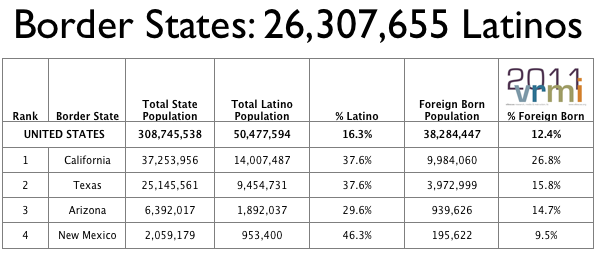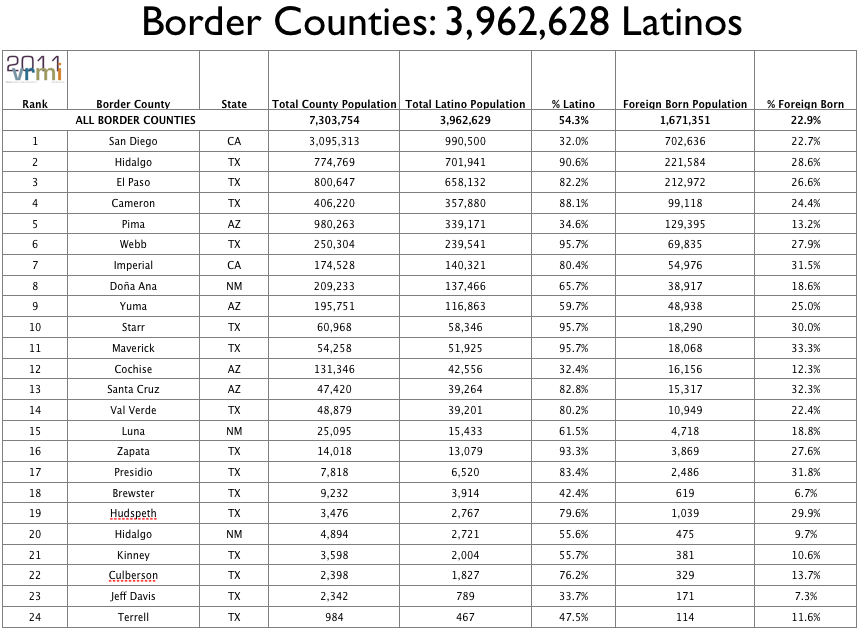52% Of The Latino Population Lives In 4 Border States
For the first time since the 1850s, the borderlands have again become a predominantly Latino region of the United States. Over half of border county residents are of Latino ancestry.
At the close of the U.S.-Mexico War, the southwest region of the newly configured continental U.S. contained the majority of the country’s Latinos, and over 80% of this population resided in New Mexico. Although several border cities would eventually establish Latino majority populations in the late 20th century, the borderlands as a whole are now 54.3% Latino and contain 8% of the total Latino population.
Over half of the U.S. Latino population resides in the four states that border Mexico: California, Arizona, New Mexico and Texas.
Although this region contains several of the oldest Latino subpopulations in the nation, generational divides are increasing now that one out of five residents in this region was born in another country.
The 24 counties that share an international border with Mexico in California, Arizona, New Mexico and Texas contain 8% of the U.S. Latino population.
If these counties were configured as a state, the 7.3 million residents and would be the 13th largest state in the country, ranking between Virginia (8 million) and Washington (6.7 million).
Nearly four million Latinos reside along the border — slightly larger than the total Latino population of Puerto Rico (3.7 million). According to recent Census data, over half of border county residents are of Latino ancestry and nearly a quarter of all residents are foreign-born.
So then our question becomes, how do these Latino communities affect the rest of us in the U.S. and vice versa?
*Note: Click on the charts to see a larger version.
Joseph P. A. Villescas, Ph.D. is an independent consultant, writer and instructor. He conducts extensive investigations on Latino and other multidimensional populations that explore trends in their educational development, media consumption, internet usage, voting behaviors, racial categorization, organizational capacities and readiness for future leadership roles in community settings. He is also the founder and owner of Villescas Research, Media & Instruction, LLC.



